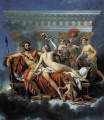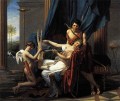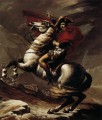Artists
Jacques-Louis David
- Country:
- France
- Birth year:
- 1748
- Death year:
- 1825
-
 $AU 279.48 ~ 2,274.06
$AU 279.48 ~ 2,274.06 -
 $AU 259.86 ~ 2,193.05
$AU 259.86 ~ 2,193.05 -
 $AU 275.44 ~ 11,317.88
$AU 275.44 ~ 11,317.88 -
 $AU 270.34 ~ 4,613.04
$AU 270.34 ~ 4,613.04 -
 $AU 240.40 ~ 1,641.16
$AU 240.40 ~ 1,641.16 -
 $AU 258.28 ~ 1,300.81
$AU 258.28 ~ 1,300.81 -
 $AU 652.32
$AU 652.32 -
 $AU 290.57 ~ 1,460.11
$AU 290.57 ~ 1,460.11 -
 $AU 280.81 ~ 2,276.76
$AU 280.81 ~ 2,276.76 -
 $AU 277.30 ~ 1,682.24
$AU 277.30 ~ 1,682.24 -
 $AU 285.54 ~ 1,180.38
$AU 285.54 ~ 1,180.38 -
 $AU 285.37 ~ 6,591.78
$AU 285.37 ~ 6,591.78 -
 $AU 273.28 ~ 3,714.25
$AU 273.28 ~ 3,714.25 -
 $AU 271.09 ~ 16,858.92
$AU 271.09 ~ 16,858.92 -
 $AU 253.55 ~ 2,200.38
$AU 253.55 ~ 2,200.38 -
 $AU 286.45 ~ 4,861.67
$AU 286.45 ~ 4,861.67 -
 $AU 257.52 ~ 49,163.93
$AU 257.52 ~ 49,163.93 -
 $AU 285.28 ~ 4,743.12
$AU 285.28 ~ 4,743.12 -
 $AU 270.24 ~ 16,160.77
$AU 270.24 ~ 16,160.77 -
 $AU 273.97 ~ 11,016.11
$AU 273.97 ~ 11,016.11 -
 $AU 279.48 ~ 2,274.06
$AU 279.48 ~ 2,274.06
The best-known painter of the neoclassical period in France. In 1766, at the suggestion of his friend Francois Boucher, he became a student of Joseph-Marie Vien. He was strongly motivated by his first stay in Italy from 1775 to 1780, where he was inspired by the Baroque painting of Caravaggio as well as by the Roman antiquities. While he was there he was also introduced to the artistic theories of Anton Raphael Mengs and the art scholar Johann Joachim Winckelmann (1717-1768). In 1784 he became a member of the Paris Academy. As an active Jacobin, he was the leading painter during the French Revolution. He later pledged allegiance to Napoleon I (1769-1821), who named him The "First Painter" in 1804. In 1816 after the fall of the emperor, he was exiled to Belgium. David consciously used his art as an instrument of his political convictions. Works by the artist include Andromache by the body of Hector, 1783, Joseph Bara or Viala, 1794, and Napoleon in his Study, 1820.


